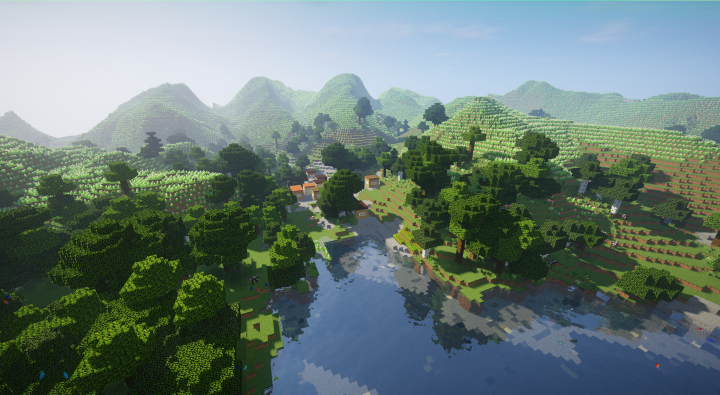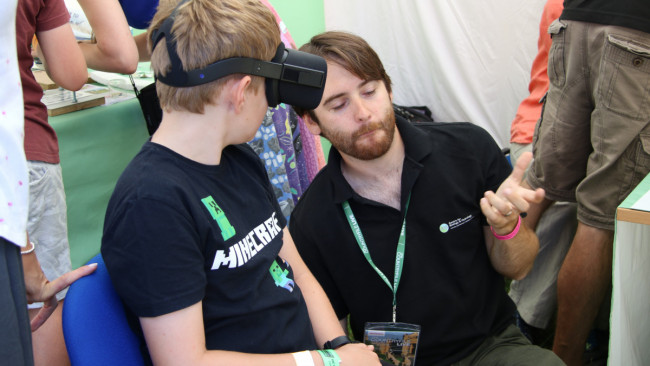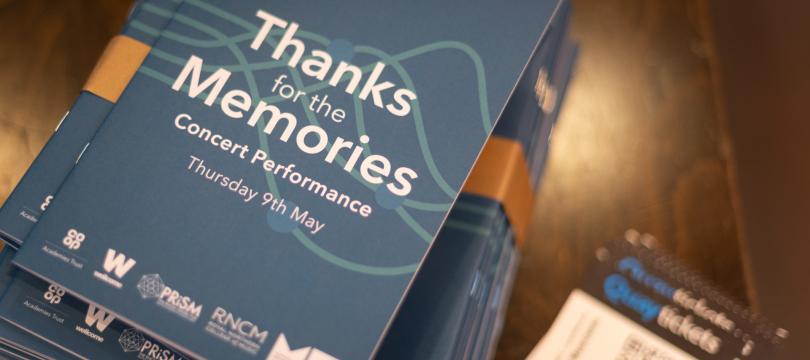Minecraft, virtual reality, & sustainable farming
Dr Tom August, computational ecologist at CEH, explains how he and his team developed a Minecraft virtual reality experience as a starting point to talk to young people about sustainable farming.

Dr Tom August, computational ecologist at the Centre for Ecology and Hydrology (CEH), explains how he and his team developed a Minecraft virtual reality experience as a starting point to talk to young people about sustainable farming.
How do you bring a map to life, make it engaging, and ensure people hear the story it tells? This was the challenge I faced when myself and my colleagues set out to build a public engagement project around maps of future farming practices based on decades of research into sustainable farming.
Avid technophiles and gamers, we decided to build future worlds in virtual reality that could be explored by participants while they learn about the impacts of changing farming practices on wildlife and the environment.
Virtual reality and Minecraft
Our ‘CEH Craft’ project used a variety of datasets including CEH’s satellite-based Land Cover maps to build realistic, scale-models of UK landscapes in the popular computer game Minecraft. These landscapes can be altered to show what the future might look like under further agricultural intensification. Virtual reality headsets allow children and adults alike to explore these worlds while talking to researchers about the science behind what they were seeing.


Dr Tom August of the Centre for Ecology & Hydrology discusses the Minecraft-based experience with a young visitor at Countryfile Live in August
The pairing of virtual reality and Minecraft was a key part of the project’s success. Minecraft is the second most popular computer game of all time behind Tetris, and as such the project received a lot interest from children, our target audience. The game offered a fun environment that children were familiar with, allowing them to explore potential complex scientific issues.
Using virtual reality let us control the content participants saw. By placing participants on a virtual rollercoaster, we were able to take people on a guided tour of the landscape, talk to them about what they were seeing, and explain the importance of research into sustainable farming practises.
Innovative technology and a simple story
Embedded within a large research programme (ASSIST), the Public Engagement with Research (PER) project was designed to communicate the aims and importance of CEH’s research in sustainable agriculture. The combination of innovative technology and a simple story made CEH Craft a success, informing young families and farmers at two events in the summer of 2018. The “Minecraft” tag on the project was a big draw for visitors to our stands. This led to opportunities for myself and other scientists from CEH to have engaging conversations about the impact of our science on the way we farm sustainably in the UK.
Sharing learning
The innovative nature of this PER project drew attention from within the organisation and from outside. A number of other research organisations and NGOs have expressed interest in using Minecraft as a public engagement tool and I have the opportunity to talk at two conferences to share what we learnt. We are always happy to hear from others who have ideas for how we can use Minecraft to talk about environmental issues.
This project would not have been possible without an internal grant supporting public engagement in research. Without this support this, potentially risky, activity would have been impossible in my day-to-day research.
Future activities planned for CEH Craft include developing resources for schools, increasing the reach of the engagement through online media and embedding this activity in other areas of CEH’s science, including flooding.
The CEH craft team included Tom August, Gary Powney, and Reto Schmucki, who were funded by the EMBER project (EPSRC), and ASSIST (BBSRC & NERC).
Find out more about the project on YouTube: An introduction to CEH Minecraft.

